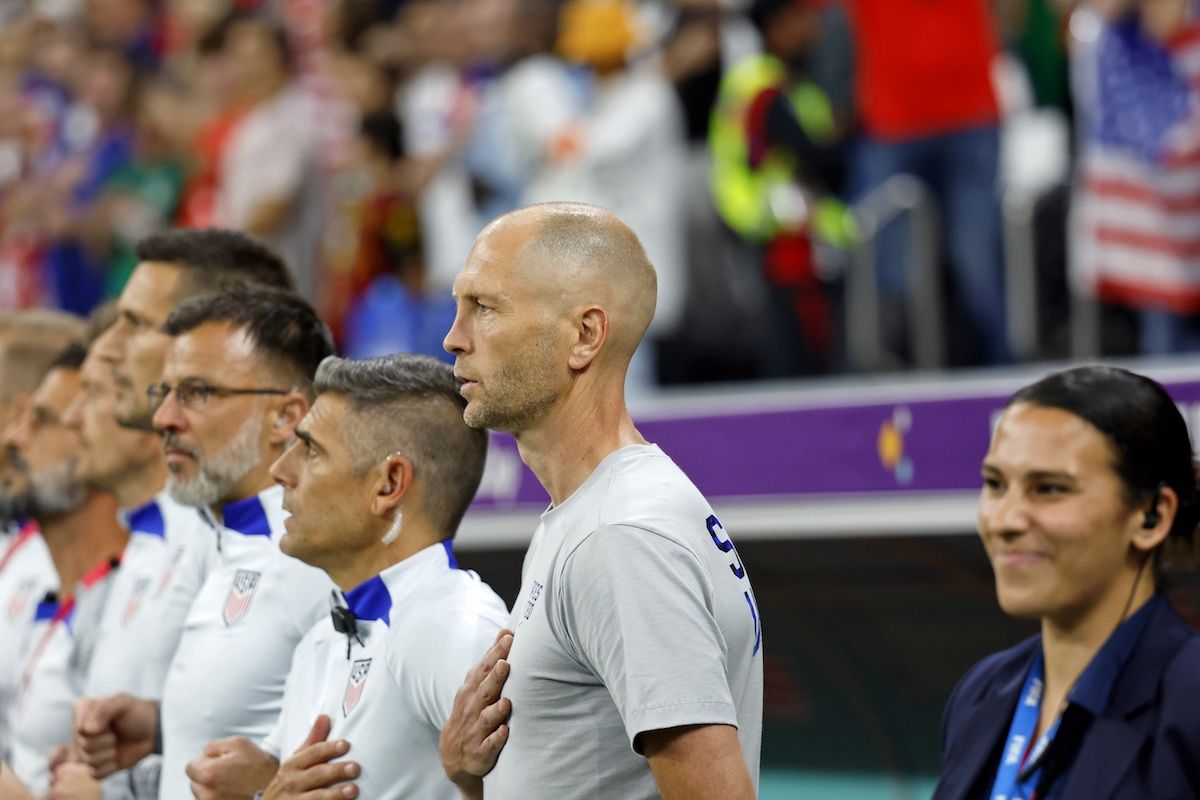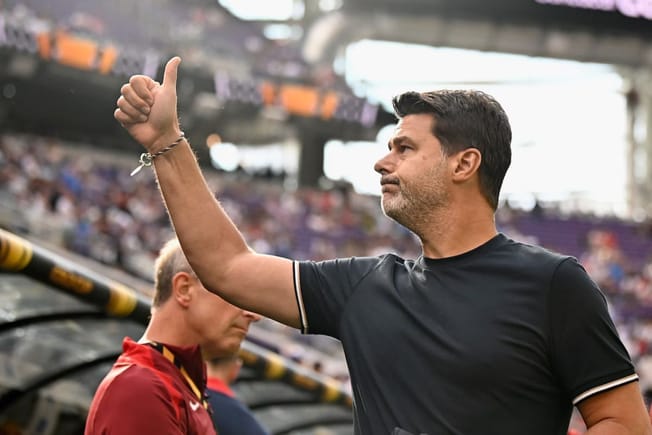Quick Hits
- It’s been a long and winding road for the United States under manager Gregg Berhalter, but the team’s win on Tuesday against Iran was a major high point
- Berhalter deserves credit for creating some of the framework for his team’s World Cup success
“No one believed that the U.S. could play good football. We’re just here trying to show the world.”
Somewhat surprisingly, that quote isn’t from United States manager Gregg Berhalter, who has championed a particular style of play from his very first day on the job. No, the quote is from one of Berhalter’s key attackers, Tim Weah.
The U.S.’s 26 players all know what they’re trying to do at this World Cup. They’re trying to win games and push as far as they can on the biggest stage their sport has to offer. But, maybe even subconsciously, they have one more goal in mind: playing good football. That idea has been drilled into them by their manager for years now, ever since Berhalter’s first national team camp.
“We want to use the ball to disorganize the opponent to create goal-scoring opportunities,” Berhalter said in January, 2019. Since then, he’s said it over and over and over again. To say it another way — Weah’s way — he wants the U.S. to play good football.
And on Tuesday, in a must-win game against Iran, the United States played some good football en route to a 1-0 win.
A BUMPY RIDE
The United States have gotten some strong results over the last few years. They’ve even put together some good performances along the way, despite their youth and propensity to watch a score of players suffer a score of injuries while walking from the team bus to the field.
Still, the road to the World Cup knockout stages has been more than a little bumpy. Berhalter’s personnel decisions, his lineup rotations, and his tactical approach have all justifiably been called into question over the last few years. There were lows, like the U.S.’s near loss away to Honduras in World Cup qualifying. And their actual loss away to Panama in World Cup qualifying. And a friendly defeat against Mexico in 2019. And against Japan earlier this year.
Like I said, it’s been a bumpy ride.
But coming into their game against Iran on Tuesday, the United States’ task was clear. A handful of clips and a three-minute film session could’ve told the team all of the big-picture details about Iran’s tactical approach under manager Carlos Queiroz. Queiroz believes that the “best way to (play) is to close the highways” — he said as much on Tuesday. He wants his team to defend. And then defend harder.
Against compact defenses, the U.S. have often struggled to create chances and score goals. Despite all of Berhalter’s talk about creating chances with pretty possession play, we simply haven’t seen that tree bear consistent fruit for the United States. Needing three points against Iran to advance out of Group B and into the Round of 16, the U.S. entered the game knowing they were going to have to break down a low block. And to do so, they would have to play the kind of soccer that Berhalter has been talking about since his first day on the job.
Tuesday’s game was always going to be a referendum, of sorts, on Berhalter’s tactics with the USMNT. Could his American team go out there and play his new American way and collect 3 points in a must-win game?
After a 1-0 win that sent the U.S. through to the knockout rounds, we now know that the answer is “yes”.
METHOD TO THE MADNESS
The U.S.’s possession wasn’t perfect against Iran.
But Tuesday’s game was a perfect example of why Berhalter wanted to develop a tactical style that is built around breaking through and creating chances against a compact team. Sometimes in soccer, you face teams that just want to close the highways. And it’s up to you to speed past the roadblocks.
That’s exactly what the U.S. did in the first half and on their go-ahead goal against Iran.
It was the United States’ best first half of the World Cup so far. The team created 1.4 expected goals in the opening 45 minutes, which was the most in one of their World Cup games dating all the way back to 1966. The U.S. had plenty of touches on the fringes of Iran’s defensive shape, but they also broke into the box. They were testing those roadblocks.
That's a good-looking #USMNT first-half touch map... pic.twitter.com/W2LkMFbA5l
— Paul Carr (@PaulCarr) November 29, 2022
And then, on the goal, they sped right past them. The goal in the 38th minute — a heroic effort from Christian Pulisic – came from an 11-pass sequence that went back to front and from one wing to the other. It went from…inhale…Yunus Musah to Tyler Adams to Matt Turner to Weah to Musah to Sergiño Dest to Adams to Antone Robinson back to Adams to Weston McKennie to Dest to Pulisic for the finish…exhale.
The entire sequence was a thing of beauty.
Matt Turner starting the move for the #USA goal with a superb pass pic.twitter.com/gBQdkjxjnE
— Doc (@karthikadhaigal) November 29, 2022
The best part of the goal isn’t McKennie’s pass into the box. Or Dest’s header. Or even Pulisic’s finish. No, the best part of the goal is that we’ve seen this exact goal before. Multiple times. One came in the 2019 Gold Cup…
Berhalter Ball came full circle last night pic.twitter.com/mKh8hSqaZ9
— Henry Bushnell (@HenryBushnell) November 30, 2022
And another came in the 2021 Concacaf Nations League…
Other chaser...pic.twitter.com/wHWT5RU99b
— Matthew Doyle (@MattDoyle76) November 30, 2022
EXECUTING THE VISION
The amount of time between those goals has been too great and the variance in the U.S.’s performances in that time has been too apparent for this team to be anything more than underdogs in the World Cup’s last 16. But the truth remains: Berhalter’s U.S. team has been building towards that performance and that goal against Iran for literal years now. When it mattered most, there was Berhalter’s vision.
Ultimately the players deserve the most credit for the United States’ World Cup progress. They’re the ones out there running (and running and running) around and scoring and denying goals. So many of the U.S.’s best players have actually played together at this tournament. Pulisic, Weah, McKennie, Musah, Adams, and Dest each started all three of the United States’ group stage games.
For a team that has been decimated by injuries over the last few years, this sudden change in fitness fortune is a major development. Gio Reyna is really the only missing attacking cast member.
Having those players on the field together makes a huge difference and the team is clearly better off because of it. But, watching the United States beat Iran in a must-win game, you saw the players working together within a tactical framework. An identifiable tactical framework, at that. When you add the players to the tactics, you get something special. You get a matchup between the United States and the Netherlands in a World Cup knockout round game.
The picture that Gregg Berhalter has been painting for almost four years now hasn’t always been clear, but it was on Tuesday. It was when it really mattered. And that should count for something.







Comments